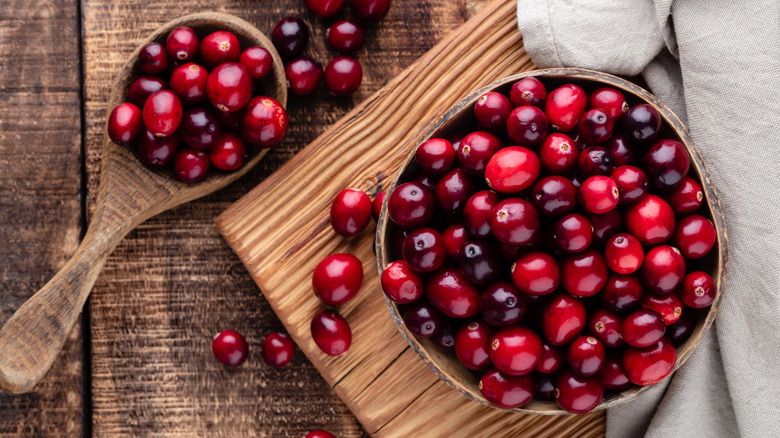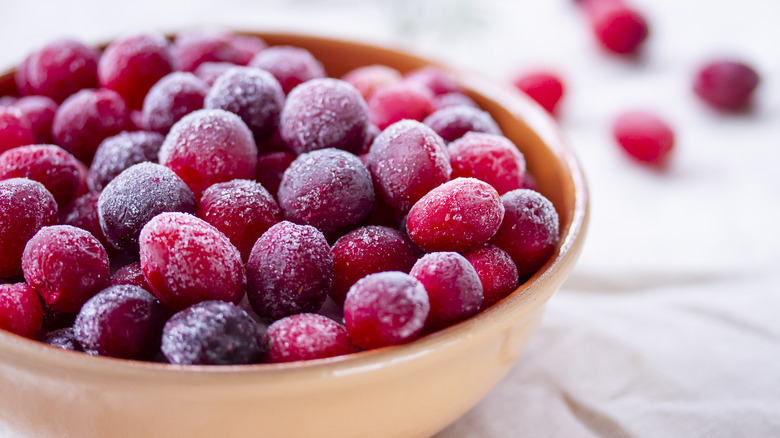The Best Way To Store Fresh Cranberries For Maximum Shelf Life
Vibrantly colored with a delicious sweet-yet-tart taste, cranberries are a seasonal staple in the fall and winter months. If you've bought a bag or more at the store, you'll want to make sure they last as long as possible once you get them home. And the good news is, thanks to their high acidity, these fruits can keep for up to two months in the refrigerator, so long as you store them correctly.
The crisper drawer of your fridge can sometimes sabotage produce, but it's ideal for cranberries, as it's one of the cooler parts of the refrigerator that has vents to control humidity. Before you put them in the drawer, discard any berries which are soft, mushy, or shriveled to prevent them spoiling the others. And don't wash the berries before storing them, as any dampness can encourage the growth of mold; wash them when you're ready to consume or cook with them instead. You can keep them in their original packaging, or transfer them to a sealed airtight container or zip-top bag.
If you've bought a big batch, this fruit can be incredibly versatile in recipes beyond sauces or salads. You can use fresh cranberries in apple pie filling, cook them in a spicy lamb tagine or casserole, or add the tart fruit to guacamole for a crunchy contrast. If you want them to last even longer than a couple of months, fresh cranberries also freeze really well, too. You just need to prepare them properly so they stay in good condition.
Freeze fresh cranberries so they last all year
Fresh cranberries can last for around 12 months or so in the freezer, which means you can have a steady supply all year round, even when they're not available in the shops. But just like when freezing strawberries or other berries, there are a few key steps worth following, especially to prevent them from sticking together in a solid, unmanageable block.
First, rinse and drain the fresh cranberries, and leave them on a towel to dry. Spread them out in a single layer on a baking tray, and freeze them for between two to eight hours. Then transfer them to zip-top bags or sealed freezer containers, labeled with the date, before putting them back into the freezer. You can then just take out what you need when you want to use them.
You don't need to defrost cranberries before using them in recipes — you can add frozen fruit to muffins and other bakes with great results, and it's easy to make cranberry sauce using frozen berries, too. However, you may find it easier to thaw them for a few minutes at room temperature first if you need to chop them up, so they're not overly hard. Or, if you would prefer to fully defrost them, just do so in the refrigerator overnight.


